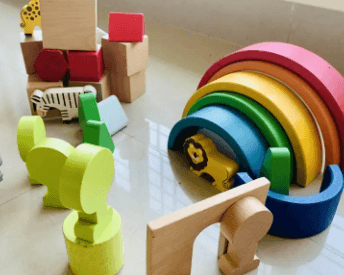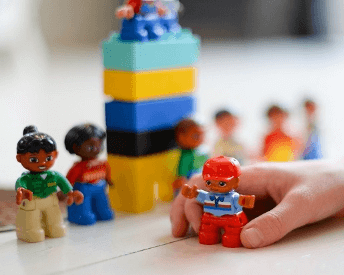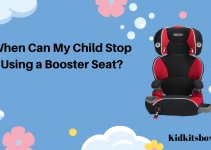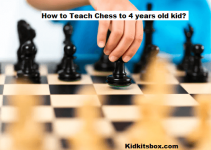There are many ways to encourage our kid’s ability to play alone, but the easiest way to start is to ensure your kid has open-ended toys.
What are open-ended toys?
Open-ended toys can be used in various ways and are more likely to encourage open play. There is no set way to play with open-ended toys. For example, consider a stick that can be used as a shovel, knife, bat, flagpole, or fairy wand.

Suppose you want your child to work. Open toys are often described as 90% children and 10% toys because they leave enough space for children’s input. Building block sets allow you to build a tower for your princess or a busy city full of skyscrapers.
Open toys provide more opportunities for kids to engage in critical thinking and problem-solving. They promote creativity, imagination, and exploration. Playing with open toys helps develop the gross and fine motor skills needed to succeed in school.
What are some examples of open toys?
Examples of open toys include Magna tiles, natural objects, art supplies, figurines, and automobiles. There is no reason to show you how to play with this material. These plays are often especially enjoyed by children over 2.5 years old, as children over 2.5 years old start playing their favorite games and have more fun with age.
Why are open toys better than closed ones?
Open toys encourage real play, and we know that play is a way for children to learn emotional and social skills.
A closed toy or toy-directed toy is the opposite. Light-up monster trucks that make a spooky sound are beyond imagination. These toys are typically only used for a short period and are used only once.

Closed toys usually make noise, have batteries, light up, talk, and move. This is what toys do, and little kids no longer have to do it. You can also read the full comparison of Close-Ended vs. Open-Ended Toys.
What are the Advantages of open Ended Toys?
1. Space for children to explore ideas
Test theories and engage with new concepts. In other words, they get all the science! It doesn’t usually look this smart from the outside. We would be amazed if we could only see the colorful light in a child’s developing mind!
2. Provides an ideal environment for flow
When a child is in the flow, a fully immersed mental state in which the child is easily engaged and often has no sense of time, they can move smoothly from one idea to another, learning and exploring different aspects of a specific idea.
3. No battery
The big downsides of battery-powered causal toys are that they interfere with concentration and limit your imagination. On the other hand, if you use a non-electrical toy, your child can make sounds independently!
Open toys also encourage children to feel and move different parts independently. Electronic and digital add-ons, increasingly found even in physical toys, can disrupt parent-child interactions. The harmful effects of screen time are also an important consideration, especially for young children.
4. Develop Kid’s social and emotional intelligence
When children play with open toys with other children, they learn to read and appropriately respond to social cues, voices, facial expressions, and body language. Their brains are better at learning to read these signals because of the low-pressure nature of this kind of play.
Again, there are no rules, just imagination. The pressure disappears, and each child explores and creates in their way. Impersonation play helps your child develop emotional intelligence by exploring a wide range of emotions commonly expressed and then reacted to by other children.
5. A comfortable environment without fear
Fear is one of our greatest barriers to learning, and this is especially true for young children. Children need complete freedom to take risks, explore new ideas, observe cause and effect, and be creative. This puts them on an exciting road to figuring out what works and doesn’t.
Open play has no rules, so there is no right or wrong way to play. In this safe and nurturing environment, children actively learn and expand.
Frequently Asked Questions
Should I buy a wooden toy or a plastic toy?
After all, the quality of play is not significantly affected by whether the toy is wood or plastic. More often, wooden toys are more open.
Beyond that, we know the world no longer needs plastic waste in landfills. The less plastic material you buy, the more it ends up in landfills.
What if my kids don’t play with open toys?
If your kid doesn’t play with open toys, you may need some help getting started, especially if you don’t have experience playing with open toys. I suggest you start playing, take the initiative, and play. Soon they will be jumping in to play with you.
You may also want to set up their play area as an inviting scene. You can make a path with a truck or car, place a large pile of blocks in the center of the room, or place a handful of toys with the same theme, such as space. Include a few books on the subject too!)
Think about how your space is organized. If the toy has a lid or is hidden in a too-high box, it will be more difficult for children to handle. Minimize the number of toys that can be used at one time. Then kids can get creative!


